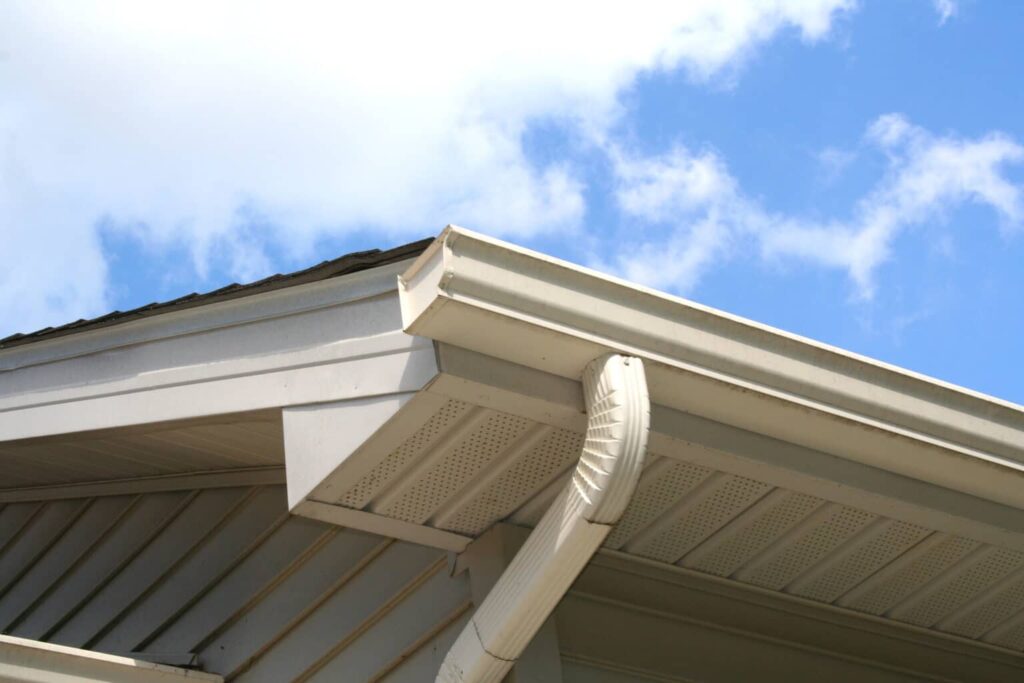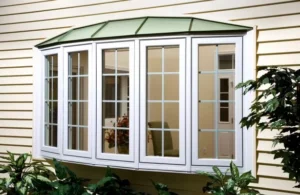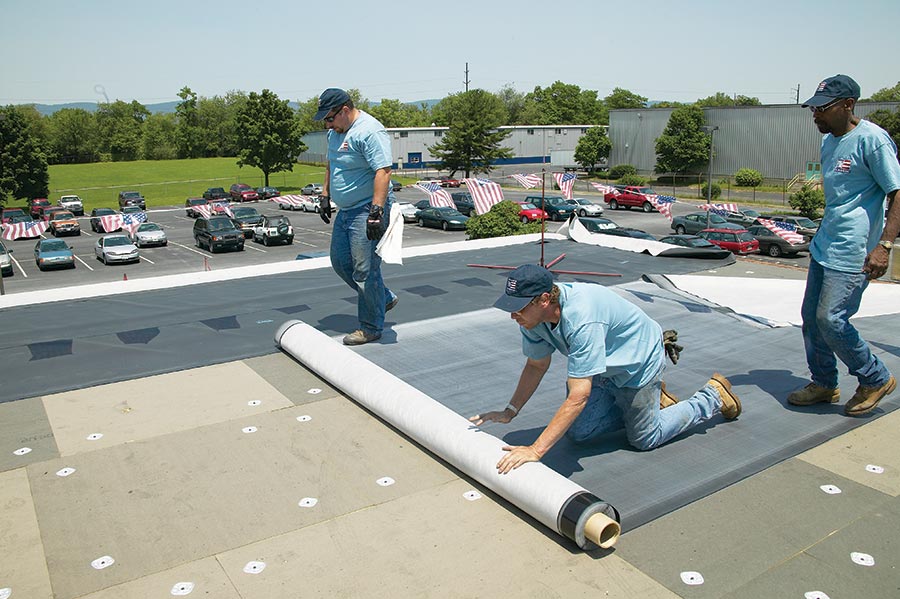In just about a week, daylight savings will officially come to an end. That means one thing, winter is coming. Soon, the days will be shorter, the nights will be longer, and the temperatures will begin to drop.
Every area in the U.S. must prepare for winter in its own way. Up in the Northeast, people load up on ice melt, generators, and other disaster preparedness gear. Down in Florida, residents take fewer precautions, as they only need to prepare for the offshoot cold weekend or drought in the winter.
For Virginians, we must prepare for anything thrown our way due to the varying climate zones of the state. If you live on the coast of Virginia, you can experience warmer winter weather due to the warmer ocean water, but the ocean can also conjure up dangerous winter winds and storms as well. Whereas people living in the mountainous areas of Southwest and Western Virginia experience higher snowfall than other areas.

With all that said, here are four winter home preparedness tips any Virginia resident can use this year to make their home safer for whatever mother nature throws their way.
1. Check all Gaps and Cracks
Every homeowner, no matter where they live, should check their window and door frames each year to see if there has been any shifting or loss of insulation. Even if the gaps and cracks around your home may be sealed one season, harsh winter conditions can quickly shrink caulk and other sealants that are used to prevent drafts. Heat loss through drafty windows and doors is responsible for over 25% of your energy bill each month.
An easy way to find window gaps throughout your home is by using the candle method. What you will do is light a candle and then trace the outline of the window with the flame. If the flame is drawn out or in, you have gaps. Just be sure to remove window coverings prior to this test. After identifying the windows and doors that are the draftiest around your home, it’s time to tackle the problem.
Luckily for homeowners, fixing drafty windows is something that almost anyone can DIY. Here is a step-by-step guide to sealing window gaps:
- Clean the windows. Using a hosed vacuum cleaner is an easy way to clear any dirt and debris from most gaps and crevices which will help whatever sealant you use bond better.
- Measure the gap. There are a variety of products that can be used to seal drafty windows and doors, knowing how big of a gap you are dealing with will be helpful when picking out a solution.
- Use caulk. For smaller cracks and areas that may get damp, a silicone-based exterior caulk will work the best and be durable for years to come. Just know, silicone caulks can only be cleaned with mineral spirits and will be a bit pricier than acrylic-based caulk.
- Weatherstrip bigger gaps. For larger gaps caulk just won’t cut it. If you find larger gaps in some windows, consider using some sort of adhesive-backed weather stripping to seal the gap. Metal strips tend to be the best, but cost-effective options such as foam can do the trick too.
- Bring in a professional. If you find that your gaps are bigger than an inch around your window and door frames, then bringing in a specialist to look at the issue is the route you should take. Our window and door contractors would be happy to come out and https://contactcolonial.com/windows-and-doors/replacement/ive you a consultation today to fix any issues you may have with your windows and doors before the winter.
Pesky gaps and cracks can cause drafts in the winter and A/C inefficiencies in the summer. Fixing these gaps should be a priority during any time of the year but during the long winter months, it’s a must.
2. Inspect your Furnace
Every year, too many homeowners make the same mistake. They wait until winter is already here to turn on their furnace, which is far too late. If you wait until the cold weather is already here to turn on your furnace and something is wrong, you’ll now be behind the eight-ball and be scrambling to fix your system during the winter. To combat this, it’s best to look over your heating system as soon as you can.
First, check the furnace filter on your system to make sure the air being drawn into the furnace is clean and not overworking the unit. If it’s dirty, replace it with one tailored to your home’s needs.
Sadly, replacing the filter is just about all the basic homeowner can do when servicing their own furnace, the rest of the maintenance will need to be done by a professional. Bringing in an HVAC specialist to look over and perform basic maintenance on your furnace will be critical in maintaining the efficiency and longevity of your system. Each year a furnace misses out on a basic checkup, it loses an estimated 5% of its efficiency rating.
Something to keep in mind when you have your furnace inspected is the age of the furnace. Average furnaces last 15-20 years, so if yours is approaching double digits in age, it would be wise to start thinking about getting a new one. When the HVAC technician comes to look over your system, ask them how long they think your system has left on it. Again, it’s wiser to replace something before it collapses, rather than be stuck without heat in the winter.
A new furnace is a purchase you might have not expected to have to make in such a quick period of time, but doing so before winter will save you headaches down the road. If you need extra funds, something like a personal loan can be used to make up the additional cost in the interim. If you choose to forgo getting a new furnace before the season, it can lead to things like frozen pipes, expensive utility bills, and cold spots throughout the house if it fails.
Remain diligent with your furnace to ensure you stay warm all winter long.

3. Examine the Roof
Finding a leaky or sagging roof is never fun, but discovering one of these issues in the winter can be a disaster. Before the cold months roll in, try to inspect your roof the best you can. Again, this is a project that will likely require the help of a trained professional, but there are some steps any homeowner can take in the meantime.
From the ground, just about any homeowner will be able to identify some common issues with their roof. Try to find some different vantage points of your roof and look through some binoculars around every area of the house. When looking at the roof look for these things:
- Shingles that are missing, cracked, or curling
- Mold or mildew buildup anywhere on the roof
- Signs of rodent or bird nesting
- Rusted flashing
- Sagging or damaged gutters
- Structural issues with the chimney
If you notice any of these signs make sure you contact us right away. These are all signs that your roof needs to be inspected and could require maintenance or even a replacement.
Failing to address these issues before winter can lead to a slew of problems with your home down the road. When snow, rain and heavy winds beat down on an already damaged roof more issues can arise. Eventually, the inside of the home will be impacted by the roof. Some problems a failing roof can lead to are:
- Ceiling leaks
- Moldy walls
- Insulation damage
- Energy inefficiency
- Roof collapse and structural damage
The best way to maintain your roof is by having a professional come and inspect it every few years. A roof inspector will be able to identify issues long before they wreak havoc on your home. Contact us today for a free inspection before the first snowfall of the season.
Also, we understand that things come up. If your roof happens to fail during the season, we offer emergency roofing services including repair and replacement.
4. Get Supplies
We aren’t talking about hoarding bread or milk in this section, but instead winter-related home products every homeowner should have before the season starts. Just like with furnaces, homeowners often wait until winter is already here to get things like ice melt, shovels, and a backup generator. Waiting until then is a gamble as you could go to the store and find the shelves have already been picked clean, especially this year with continuing supply chain issues.
Instead, we recommend creating a winter gear checklist and buying everything you can now so that it’s already done. Being prepared is essential to maintaining your home in the winter.
Some common items to put on your shopping list are:
- Ergonomic Shovel
- Magnesium Chloride (a better and safer alternative to rock salt)
- Pipe Insulation
- Roof Shovel
- Generator
- Kerosene Heater
Having all of these items accounted for before winter will only help you tackle any problem that mother nature might throw at you this year.
Ready to protect your home this winter?
At Colonial, we want to be a resource for any Virginia homeowner. Whether you have been a customer with us before, or if you are just trying to learn more about your home, we are here to help you.
If you have any questions about anything around your house, contact us today. From commercial to residential and everything in between, we’re here to be your trusted, experienced roofing and siding contractor. Give us a call at 703-754-9551 or visit us here.

Trusted by Industry Experts












